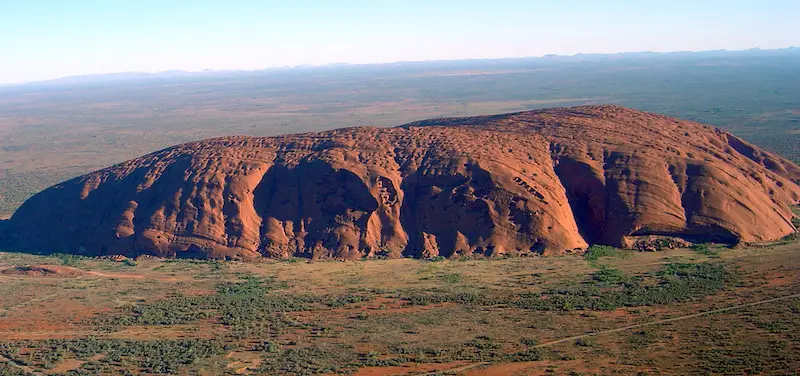This past weekend, Australia took the bold move to shut down of its most well-known and iconic tourist destinations to travelers, permanently closing off Uluru (aka Ayers Rock) to hikers and climbers. From October 26, on no one will be allowed to scale the sandstone monolith, which has been viewed as a sacred site amongst the country’s indigenous people for thousands of years. For decades, the giant stone dome has been drawn in visitors from around the globe, many of whom made the trek to the summit. But now, that will no longer be possible, giving the local Anangu people cause for celebration.
For many years, Uluru was seen as a symbol of how European colonizers discounted the rights and beliefs of indigenous people in Australia and across the globe. For more than a century, its alternate name — Ayers Rock — was used by most non-indigenous Australians to identify the rock slab found at the heart of Australia’s “Red Center.” That name comes from Sir Henry Ayers, who was the Chief Secretary of South Australia in 1873 when the region was first surveyed by settlers. But 34 years ago, on October 26, 1985, Ayers Rock was given back to the Anangu, along with the lands that make up the national park (and UNESCO World Heritage Site) that surrounds it. Those lands continued to be managed by the state on a 99-year lease, with a board that is mostly made uu pf Anangu members. Despite that however, the tourist just kept coming and hiking to the top.
This was a major insult for the Anangu, who have always seen Uluru as sacred ground. In their mind, the site should have been off limits to any outsiders, as it holds secrets that are meant for the indigenous people only. For them, the sandstone giant dates back to the very creation of the world and was brought into existence by powerful ancestral beings. The Anangu believe they are the descendants of those beings and that it is their responsibility to protect the land. There is no question that these indigenous people have a more concrete connection with those lands and how they are managed for future generations.
Over the past 30 years, the attitude toward Ayers Rock slowly began to change, to the point where it is seldom referred to by that name any longer. Uluru — the original Anangu name — has been restored over time and is generally used to reference the monolith these days. But accepting that name hasn’t been the only change, as more and more Australians now support the indigenous tribe’s rights to the land as well. It was because of this that the climbing ban was finally instituted, putting an end to the endless tourist feet that wandered aimlessly and without reverence or understanding to the summit.
As you can probably imagine, last Friday was a very busy day on Uluru. With the climbing ban set to go into effect on Saturday, visitors lined up to make one last climb to the top. The already worn footpaths were filled with people looking to sneak in under the deadline or make one final pilgrimage up the sacred stone. As the day came to an end, and the last of these travelers descended, the sun set on an era in Australian tourism. The following day it rose on a completely new, and better era instead.
- Gear Review: The Xero Scrambler Mid is an Ultralight Hiking Shoe for Spring - March 1, 2023
- Gear Review: Yeti Roadie 48 Wheeled Cooler - August 18, 2022
- Kristin Harila Continues Pursuit of 8000-Meter Speed Record - August 16, 2022
